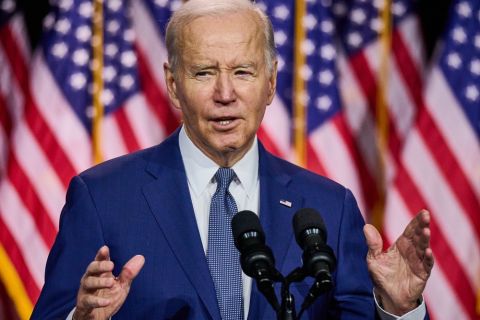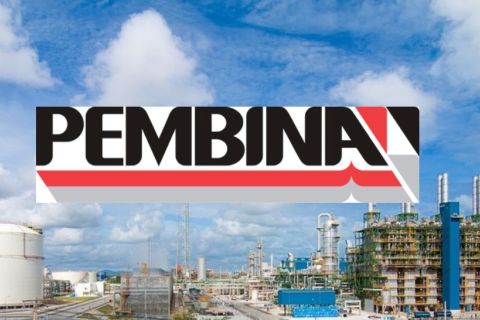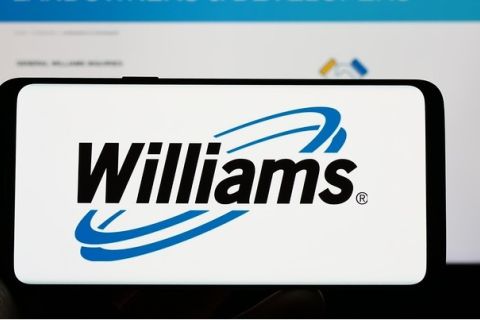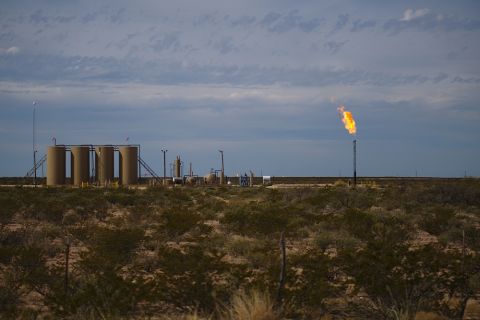Presented by:
[Editor's note: A version of this story appears in the May 2021 issue of Oil and Gas Investor magazine. Subscribe to the magazine here.]
There is an E&P IPO again—the first one since 2017. Some producers are refinancing 5% debt at less than 1%. Equity and debt issuances to fund acquisitions are happening. Investment banking to E&Ps isn’t over. Deals are just fewer for now, according to financiers.
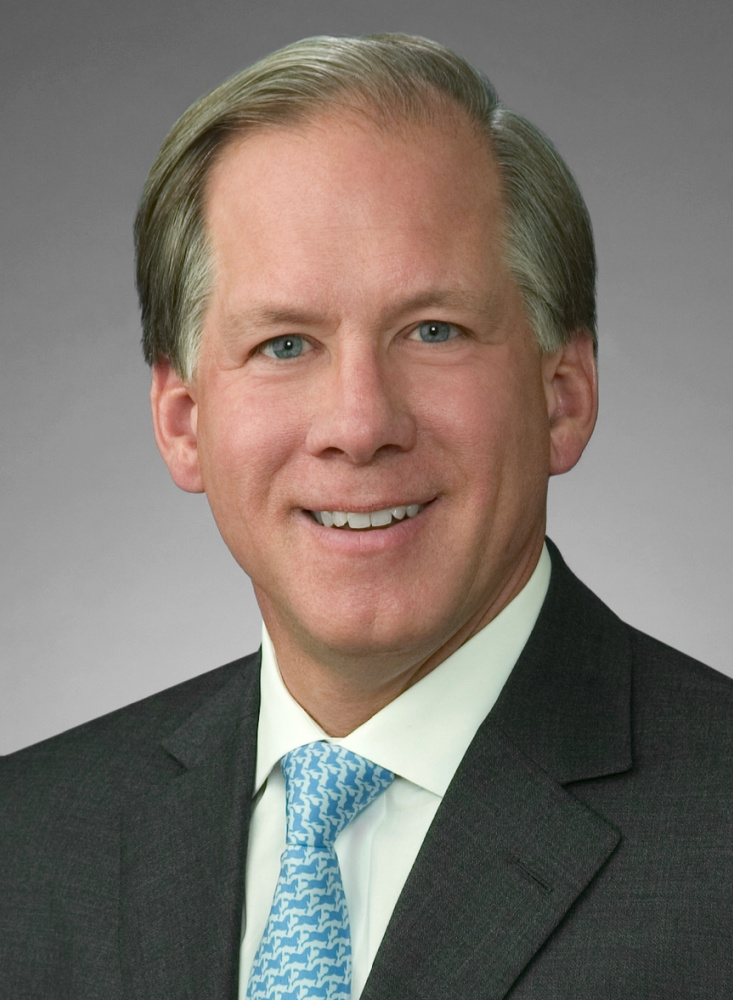
In particular, high-yield debt to oil and gas producers is back. It’s just less obvious. The interest rates today reflect that the federal funds rate is virtually 0%. “High yield really isn’t ‘high’ anymore,” said Tim Perry, co-chairman, global energy group, for Credit Suisse Securities (USA) LLC. “The vast majority of issuances are getting done at single-digit coupons—significantly below double digit, in some cases.”
For the time being, “high yield” has become somewhat of a misnomer. “It doesn’t seem like high yield, but some of them are,” he said.
Brad Nelson, managing director for Stephens Inc., said producers are mostly accessing the public debt market to refinance existing notes at lower interest rates and to push further out those that are maturing nearer term, extending the overall maturity of the debt stack.
Perry said, “The debt markets are in really good shape. I wouldn’t say they’re ‘coming back.’ I would say they ‘are back.’ There’s been an enormous number of high-yield deals done over the past few months.”
Credit Suisse arranged one earlier this year for an E&P in which half the proceeds were used as a dividend to owners. “And that was for a first-time issuer, which was unusual,” he said.
In addition, two oilfield service firms were able to issue public debt. “That market is usually less accessible to oilfield services than it is for E&P companies. So, when you started seeing things like oil service companies issuing debt and seeing a first-time E&P issuer using half the proceeds as a dividend to owners, that shows you the market is back.
“And it’s doing really well,” Perry said.
Nelson said 2020 consisted of a lower oil price concurrent with low interest rates. “Now we’re seeing an upward trend in commodity prices—with still low interest rates.”
The Fed has stated the fed funds rate will likely remain at between 0% and 0.25% for the balance of, at least, 2021. It’s possible it will be increased before year-end, of course, he said. “It’s kind of ‘TBD’ on when that will happen.”
IPO market
Vine Energy Inc. went public in March, four years after its first attempt in April of 2017 to hit the IPO window. At the time of that first S-1 filing, the 12-month Nymex gas strip was $3.40. The S-1 was updated several times in the following 12 months. By the spring of 2018, strip was $2.85.
E&P IPOs, 2017-March 26, 2021 |
||||
| Date | Company | Type | Status | Background |
| March 2021 | Vine Energy Inc. | E&P | Trading |
Haynesville-focused. Had first planned to IPO in 2017 but withdrew the S-1 in 2019 as market conditions for natural gas had not improved. |
| TBD | Cenaq Energy Corp. | SPAC | Not yet trading |
Formed by former Gastar Exploration Inc. CEO Russ Porters; plans to acquire E&P assets. |
| February 2021 | Flame Acquisition Corp. | SPAC | Trading |
Formed by Ocean Energy Inc. founder Jim Flores; plans to acquire E&P assets. |
| July 2020 | East Resources Acquisition Corp. | SPAC | Trading |
Formed by Appalachian's Terry Pegula; plans to acquire E&P assets. |
| July 2017 | Berry Petroleum Corp. | E&P | Trading |
Spinoff in the dissolution of Linn Energy LLC. |
| June 2017 | Magnolia Oil & Gas Corp. | E&P | Trading |
IPOed as a SPAC, TPG Pace Energy Holdings Corp., then renamed upon purchasing South Texas producing assets. |
| January 2017 | Jagged Peak Energy Inc. | E&P | Traded |
Bought by Parsley Energy and the assets are now part of Pioneer Natural Resources Co. |
Natural gas stocks weren’t in great demand. A pure-play public peer in the Haynesville Shale lost 40% in equity value in that 12-month timeframe. Another pure play lost 27%.
Vine withdrew its S-1 in May of 2019; strip at the time was $2.75.
When filing its new S-1 on Feb. 22, strip was $3.11, coming off a near nationwide freeze that pushed the spot price at Chicago City Gate to more than $400 and Waha (West Texas) to more than $200.
The morning that Vine Energy shares began trading on March 18—just 24 days after filing the new S-1—strip was $2.73. Shares were sold at $14 the day before. Trading closed on March 26 at $14.01.
Pricing had been expected at a midrange of $17.50 for 18.75 million shares. Increased to 21.5 million shares and with an overallotment fully exercised for another 3.225 million, Vine took in about $350 million with plans to use proceeds to pay off its bank debt.
Credit Suisse was among underwriters. It had been an underwriter of Vine’s IPO plan in 2017 as well. Is there an opportunity now for privately held E&Ps to tap the IPO market?
“Yes, is the short answer,” Perry said. “[Vine] was the first sizeable IPO in upstream in four years.”
The last E&P IPO had been oily, Permian Basin-focused Jagged Peak Energy Inc., which priced in January of 2017 just 39 days after filing its S-1. (Berry Petroleum Corp.’s IPO in 2018 was a spinoff in the dissolution of Linn Energy LLC. Magnolia Oil & Gas Corp. went public in May of 2017, but it was an assetless special purpose acquisition company (SPAC), TPG Pace Energy Holdings Corp., at the time until buying Eagle Ford assets and its renaming as Magnolia.)
Perry said of the Vine IPO in March, “That we were able to do that deal should tell you a lot. Last year, the IPO markets were pretty well closed for E&P companies and now they are back open.”
Nelson at Stephens said the Vine IPO bodes well for other producers, particularly that equity investors valued Vine at more than just proved developed producing (PDP) reserves, while operator-to-operator transactions this past year have given little or no value to proved undeveloped reserves (PUDs).
On enterprise value to total proved PV10, Vine priced at 1.6x, Nelson said. On EV to PDP PV10, it priced at 3.25x.
“So there is some implied value in nonproducing [PUD and PDNP] categories on that transaction,” Nelson said.
Producers with good balance sheets and “a really good use of proceeds will be able to tap the equity capital markets—conventionally; we’re not talking about SPACs here,” he said.
E&P SPACs
But “the SPACs will probably be able to do the same thing—to some extent,” Nelson said.
Other currently active S-1s involving upstream oil and gas assets are all SPACs. Appalachia’s Terry Pegula has one, East Resources Acquisition Corp.; former Gastar Exploration Inc. CEO Russ Porter’s SPAC is Cenaq Energy Corp.; and Jim Flores, a co-founder of Ocean Energy Inc. and founder of Sable Permian Resources LLC, has Flame Acquisition Corp.
Pegula’s SPAC IPOed last summer; Flores’, in February. The Cenaq SPAC remained in S-1 status at press time; it was filed in March.
Other SPACs filed by E&P industry members and/or traditional oil and gas private equity firms as sponsors are focused on the decarbon space. Investor’s ongoing count of these totaled 21 by late March. All but four were trading at press time.
Another SPAC, Integrated Energy Transition Acquisition Corp., plans to focus on natural gas but midstream and downstream.
Natural gas stories
In the E&P IPO space, Nelson said, “I think you will see a little bit more equity capital markets activity in 2021, which is not saying a whole lot, seeing as how it’s been zero for four years.
“But I do think people are kind of watching how Vine is trading. Of course, that’s gassy, but it wouldn’t surprise me if you saw a couple of deals on the oil side as well.”
Will there be many? Nelson said, “Not in a giant way. When you go back to some of these other cycles—the good parts of these cycles—in previous years, it seemed like when you saw one come out, you saw a whole lot come out behind it.”
E&P Public Debt Offerings, 2021* |
|||
| Date | Issuer | Raised ($MM) | Use of Proceeds |
| March | Diamondback Energy | $2,200 | Refinance 5.25% to 5.625% debt, including assumed in acquisition of QEP Resources, with 0.9% to 4.4% debt. |
| March | Comstock Resources | $250 | Redeem existing senior notes. |
| February | Kosmos Energy | $450 |
Pay off bank debt. |
| February | Comstock Resources | $1,000 | Redeem existing senior notes. |
| February | Northern Oil & Gas | $550 | Partially fund the acquisition of Reliance Marcellus LLC and pay off some of its existing debt. |
| February | Chesapeake Energy | $1,000 | Chapter 11 exit refinancing. |
| January | Pioneer Natural Resources | $2,500 | Refinance 4.125% to 5.625% debt assumed in acquisition of Parsley Energy with 0.75% to 2.25% debt. |
| January | California Resources | $600 | Partially pay off existing debt. |
| January | Antero Resources | $700 | Redeem notes due 2022. |
| January | Talos Energy | $150 | Reduce bank debt. |
| January | Range Resources | $600 | Pay off bank debt. |
Other private operators are likely looking at the Vine IPO and “maybe deals are in motion that we’re not aware of,” he added. “But I think people are going to be more watchful of how this one trades more so than in years past” before pursuing.
Different in this cycle is that ESG and “the energy transition” has accelerated into a more prominent Wall Street discussion in the energy space than oil and gas, he added. Natural gas has a prominent role in the energy transition, though. Are natural gas-weighted E&Ps’ stories more anointed?
They still have to show potential for growth, Nelson said. The natural gas price is more range-bound than oil. “We’re probably living in, say, $2.50 to $3.50 per Mcf on gas [in at least the near term].
“If you’re in the core of these gassy plays, I think you have a better shot at tapping the equity markets right now.”
Discipline or no?
Credit Suisse’s Perry said operator prudence in capital management and producers’ work in ESG are the biggest trends currently that are improving their outlooks in the equity and debt markets.

Everyone is watching whether “companies are going to hold in production growth,” he said. “Are they going to create free cash flow and return capital to shareholders?”
Compared with the past of outspending cash flow, “the strategy is very different right now.” Capital to accelerate drilling, thus grow production, “that really isn’t the business plan now,” Perry said.
As WTI has improved to $60, “there’s a lot of concern among investors that we’re going to return to that old business model. They really don’t want to see that. That’s what everyone’s going to be watching.”
Secondly, operators are moving aggressively in improving their ESG profiles—from reducing emissions to greater diversity in governance and management to using stock performance, rather than production growth, when calculating compensation.
“The market very much wants them to do this,” Perry said.
Tudor, Pickering, Holt & Co. chairman Bobby Tudor said during IHS Markit’s CERAWeek in March that oil and gas are economic now. “You can do it with attractive returns. … What’s unclear today and will be interesting to watch is whether that discipline holds,” he said.
Producers need to be good capital stewards, which is “different from how they handled that capital in the past decade.”
E&P investors appear convinced producers will continue to emphasize returns rather than growth, according to Bernstein Research analysts Jean Ann Salisbury and Bob Brackett. They reviewed producers’ continued capital discipline in late March at $60 oil when reviewing implications on midstream stock performance.
It appears “$63 is the new $50,” Salisbury and Brackett wrote, and “this is not great for midstream companies, who get paid on production and not oil price.”
Looking at midstream stock prices, investors expect “E&P discipline will hold, at least for this year,” they added. While oil moved up $15/bbl in the first three months of 2021, expectations for 2021 production “has actually decreased.”
Will producers be disciplined for just a couple of years? Tudor said at the IHS Markit conference, “For a period of time. But, over the long haul, markets tend to tell you greed trumps fear, so we’ll see how that plays out.”
Performing again
Nelson noted that, in the past four years, “the upstream sector was probably the single worst performer compared to every other industry. Tech, telecom, you name it: Upstream sector was the worst performing.”
Producers are especially keen—now that both oil and natural gas prices have recovered—to still not spend like it’s 2018. “Upstream companies are doing everything they can to show that they can be profitable and provide good equity returns through either cash flow or yield or even monetizations,” Nelson said.
“Every conversation we’re having—these management teams have got a real focus and discipline to create cash flow and more of a predictable cash-flow profile to, if anything, instill trust and confidence that the industry can perform.”
Tudor said at the IHS Markit conference that some smart investors expect “today is the best time to invest in oil and gas than in the past 20 years.” And the public market itself is suggesting the same.
“What’s the best performing sector in December and this year to date? Oil and gas,” Tudor said.
Capital is available to oil and gas, he added. “Is it, on the margin, smaller than it has been historically? Yes. Might that change if [operators] shows sustained returns over time? Yes.”
Secondary equity and M&A
Existing public operators aren’t tapping equity markets much, although it’s reopening to operators, Perry said.
“It’s not because there isn’t a market there,” he said. “Frankly, most companies don’t need to raise proceeds. They really don’t have a use of funds.”
One equity offering was by EQT Corp. in the fourth quarter of 2020 to fund the acquisition of Chevron Corp.’s Appalachian assets. A bond offering funded the balance of the $735 million deal value.
“But really there hasn’t been that many deals for either acquisitions or for more drilling capital,” Perry said. “So that’s part of the reason you haven’t seen very many equity offerings these days.”
“Frankly, most companies don’t need to raise proceeds. They really don’t have a use of funds.”
—Tim Perry, co-chairman, Credit Suisse Securities (USA) LLC
Stephens’ Nelson concurred. “The public companies are really doing the best they can to develop within cash flow and stay disciplined on acquisitions.”
Many M&A discussions are underway, Nelson added, that could lead to public E&Ps tapping the equity market “for the right deal at the right value.”
And the bid/ask spread in 2020 had grown to as much as 30%. “I feel like that is compressing substantially.
“And people are starting to allocate value to nonproducing buckets of assets in certain basins—whether it’s acreage or midstream or other categories. It just seems like people are starting to feel a little comfortable stretching to some degree.”
With OPEC having corrected the oil market and an eventual end to the coronavirus crisis more transparent, the market that was fatigued by 2020 is back at work. “It feels like we could not be busier at the moment,” Nelson said, “which is great.
“It’s just, ‘Can you actually get [acquisitions] closed and with good outcomes on both sides?’ I think you’ve got a lot better shot of doing that this year.”
Last year, prospective buyers were using PV15 to PV25. Depending on the ZIP code, the bid is closer now to PV10 for PDP “and then maybe even some allocation to other reserve categories, predominantly PUDs.”
In 2020, buyers “assumed they could get everything else for free or near free,” he added. “Maybe up to 90% of deal activity was forced. But, this year, I feel like people are selling because they want to sell—not because they have to sell.”
As a result, they’re not giving anything up for free, “including acreage. Again, that depends on where you are. But, generally speaking, I think those times [of money for PDP only] are over.”
Green tide or tsunami?
Dan McCarthy, vice chairman, investment banking, for the National Bank of Canada, said at IHS Markit’s CERAWeek conference in March that the green wave is in its early stages. “Oil and gas is not going to disappear for a long time,” he said.
“There will still be a lot of money going into oil and gas for a long, long time.”
E&P Public Equity Offerings,
|
|||
| Date | Issuer | Raised ($MM) | Use of Proceeds |
| March 2021 | Magnolia Oil & Gas Corp. | $205 | Shares were held by EnverVest; Magnolia did not receive proceeds. |
| February 2021 | Enerplus Corp. | $132 | Partially fund the acquisition of Bruin E&P HoldCo LLC. |
| February 2021 | Northern Oil & Gas Inc. | $140 | Partially fund the acquisition of Reliance Marcellus LLC. |
| December 2020 | Talos Energy Inc. | $73 | Reduce bank debt. |
| October 2020 | EQT Corp. | $357 | Partially fund the acquisition of Chevron Corp. Appalachian assets. |
| August 2020 | Southwestern Energy Co. | $158 | Partially redeem Montage Resources Corp. senior notes post-acquisition. |
| May 2020 | Comstock Resources Inc. | $207 | Redeem convertible preferred issued in the 2019 acquisition of Covey Park Energy LLC. |
Tudor said that, still, “investors can make money in businesses that are not growing or are, in fact, declining. I would suggest the U.S. onshore shale business is highly unlikely to grow anything like it has historically.”
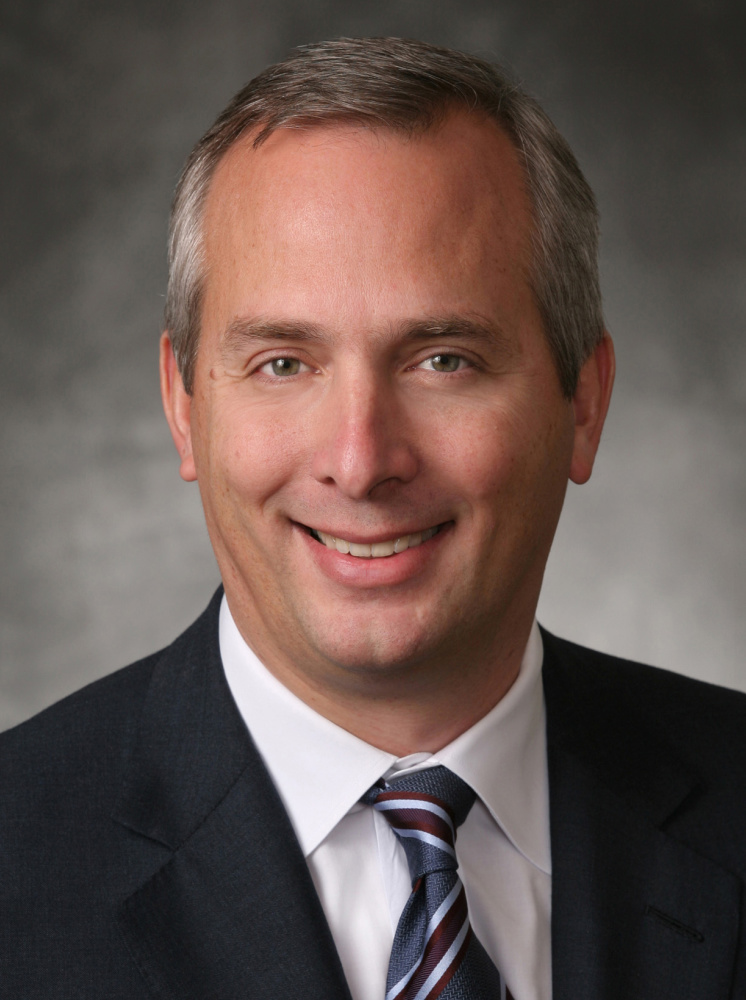
But it can make attractive returns. Meanwhile, growth industries might not make returns at all, Tudor said. “That was the story of the U.S. shale business for eight or nine years, and it might well be the story for the renewables business or [reduced-carbon tech] for the next eight or nine years.”
McCarthy said the green wave may be slow to take hold. “I don’t think a lot of people are going to do things that are not in their economic interest to meet societal goals of reducing emissions,” he said.
Instead, “what is going to happen—one way or another—is that the government is going to have to subsidize us to a certain extent to push us toward going to those new technologies [for it] to make more economic sense.”
Tudor concurred, adding that he expects the gale of thought toward oil and gas will reverse course at some point. “Our fundamental issue of taking CO₂ out of the air is not going to be solved really from the supply side,” he said.
“It ultimately needs to be solved from the demand side.”
Affecting the demand side is harder, though: It requires individual sacrifices, such as higher costs and other discomforts. “And none of those things are politically popular,” Tudor said.
But a reckoning is still to come, he added. “I think the sort of high-pitch noise directed at the traditional oil and gas business is going to abate over time, and it’s going to become more noise [that is] oriented toward consumption.
“And that’s going to make things really interesting.”
Recommended Reading
EQT CEO: Biden's LNG Pause Mirrors Midstream ‘Playbook’ of Delay, Doubt
2024-02-06 - At a Congressional hearing, EQT CEO Toby Rice blasted the Biden administration and said the same tactics used to stifle pipeline construction—by introducing delays and uncertainty—appear to be behind President Joe Biden’s pause on LNG terminal permitting.
Pembina Pipeline Enters Ethane-Supply Agreement, Slow Walks LNG Project
2024-02-26 - Canadian midstream company Pembina Pipeline also said it would hold off on new LNG terminal decision in a fourth quarter earnings call.
Williams Beats 2023 Expectations, Touts Natgas Infrastructure Additions
2024-02-14 - Williams to continue developing natural gas infrastructure in 2024 with growth capex expected to top $1.45 billion.
Waha NatGas Prices Go Negative
2024-03-14 - An Enterprise Partners executive said conditions make for a strong LNG export market at an industry lunch on March 14.
Enbridge Announces $500MM Investment in Gulf Coast Facilities
2024-03-06 - Enbridge’s 2024 budget will go primarily towards crude export and storage, advancing plans that see continued growth in power generated by natural gas.



